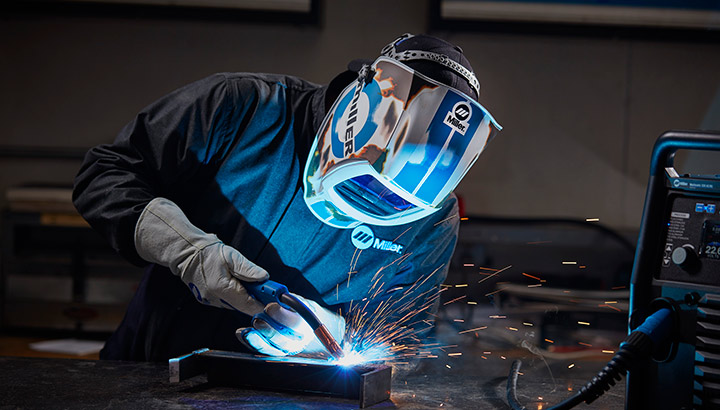Advanced Welding WPS: Customizing Requirements for Complex Jobs
Advanced Welding WPS: Customizing Requirements for Complex Jobs
Blog Article
The Ultimate Overview to Welding WPS Procedures: A Comprehensive Review for Welders
In the detailed world of welding, Welding Treatment Requirements (WPS) serve as the backbone of making certain high quality, uniformity, and security in welding procedures. Recognizing the subtleties of creating, implementing, and keeping an eye on WPS treatments is essential for welders seeking to boost their craft and fulfill sector criteria. As we look into the various components of a WPS and explore the complexities of certification and accreditation, we will discover the crucial function these procedures play in the realm of welding. Let's embark on a journey to unravel the complexities and significance of WPS treatments in welding techniques.
Value of WPS Procedures
Comprehending the importance of Welding Treatment Requirements (WPS) procedures is essential for guaranteeing the quality and honesty of welded structures. WPS treatments act as a roadmap for welders, outlining the essential actions, parameters, and materials called for to attain an audio weld. By adhering to WPS guidelines, welders can make sure consistency in their job, resulting in reputable and structurally audio welds.
One of the main factors why WPS treatments are important is their function in keeping weld top quality and integrity. Complying with the defined welding criteria and techniques described in the WPS assists protect against defects such as porosity, breaking, or incomplete combination, which can jeopardize the stamina and toughness of the weld.

Parts of a WPS
A Welding Procedure Specification (WPS) typically consists of necessary elements that detail the details demands for performing a weld, ensuring uniformity and high quality in the welding process. The essential parts of a WPS include necessary variables such as base metals, filler metals, preheat and interpass temperature levels, welding processes, securing gases, welding settings, and post-weld heat therapy requirements.
Base steels refer to the products being joined, while filler steels are used to fill the void between the base steels during welding. Preheat and interpass temperature levels are crucial for controlling the warm input and preventing concerns like cracking or distortion. The welding procedure outlines the certain technique to be utilized, whether it's gas steel arc welding (GMAW), shielded steel arc welding (SMAW), or one more method. Securing gases shield the weld swimming pool from atmospheric contamination. Welding positions define the alignments in which welding can be done. Post-weld warmth treatment may be needed to eliminate anxieties and improve the weld's buildings. A comprehensive understanding of these parts is essential for developing a comprehensive and efficient WPS.

Qualification and Qualification
Having established the important elements of a Welding Procedure Specification (WPS), the focus currently changes in the direction of the crucial aspects of qualification and certification in welding methods.

Accreditation, on the various other hand, is the formal recognition of a welder's certifications by an appropriate accreditation body or organization. Welding accreditations are normally based on the particular welding processes, products, and placements a welder is qualified to collaborate with. Holding a valid welding qualification demonstrates that a welder important source satisfies industry standards and is qualified to perform welding jobs to the called for requirements.
Producing a WPS
To establish a Welding Treatment Specification (WPS) that fulfills market criteria, careful consideration of welding processes, materials, and operational specifications is crucial (welding WPS). The primary step in developing a WPS is to determine the welding procedure to be made use of, such as gas steel arc welding (GMAW) or shielded metal arc welding (SMAW) When the welding process is determined, the following critical aspect is picking the appropriate products, thinking about elements like base metal type, thickness, and joint design. Functional specifications such as welding current, voltage, traveling rate, and protecting gas structure need to additionally be meticulously defined in the WPS.

Applying and Monitoring WPS
Upon finalizing the detailed Welding Treatment Requirements (WPS) that meticulously details welding procedures, products, functional criteria, and top quality assurance measures, the focus changes to successfully implementing and keeping an eye on the recognized procedures. Execution involves making certain that all welders included in the job are acquainted with the WPS and follow it diligently throughout the welding procedure. Reliable implementation and monitoring of the WPS are crucial for ensuring the stability, toughness, and safety of the bonded joints, eventually adding to the general success of the welding job.
Conclusion
To conclude, understanding and following Welding Treatment Specs (WPS) is important for welders to ensure top quality, uniformity, and security in their job. By understanding the elements of a WPS, getting appropriate certifications and qualifications, producing thorough procedures, and executing and checking them properly, welders can boost their abilities and effectiveness in welding practices. Sticking to WPS treatments is essential for generating top notch welds and meeting market requirements.
In the complex globe of welding, Welding Treatment Specs (WPS) serve as the foundation of guaranteeing top quality, consistency, and security in welding operations. The welding process lays out the certain method to be used, whether it's gas steel arc welding (GMAW), protected steel arc welding (SMAW), or one more approach.To create a Welding Treatment Requirements (WPS) that fulfills sector criteria, cautious consideration of welding procedures, materials, and functional criteria is important. The initial step in developing a WPS is to determine the welding procedure to be used, such as gas steel arc welding (GMAW) or protected steel arc welding (SMAW)Upon wrapping up the thorough Welding Procedure Specification (WPS) that diligently information welding procedures, materials, check it out functional specifications, and top quality guarantee actions, the focus shifts to successfully applying and checking the established procedures.
Report this page